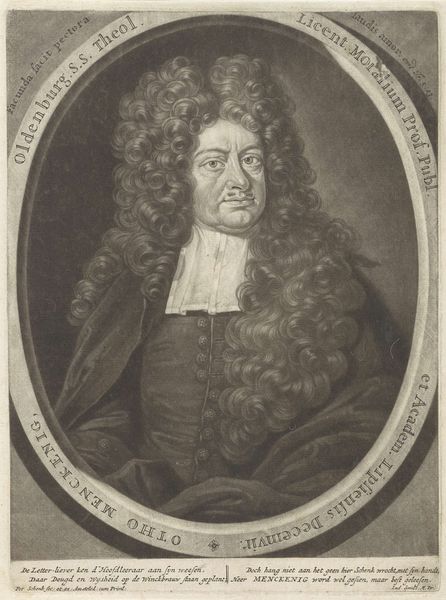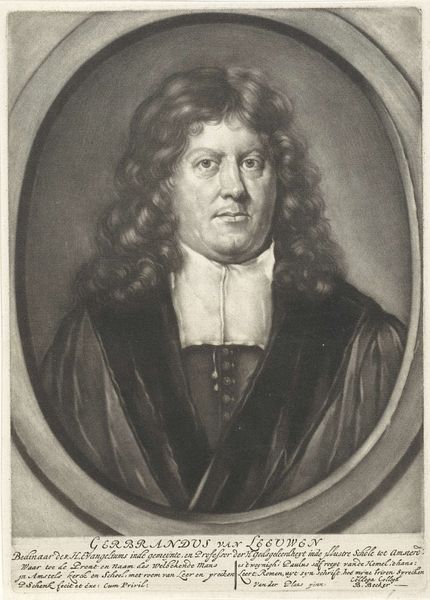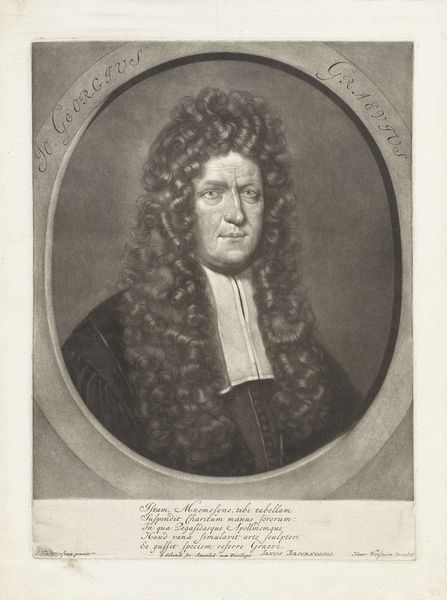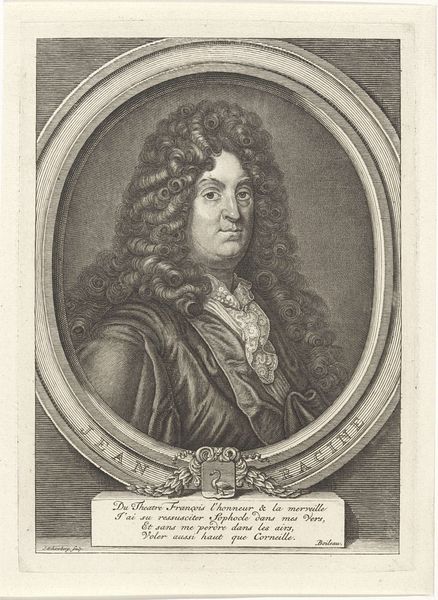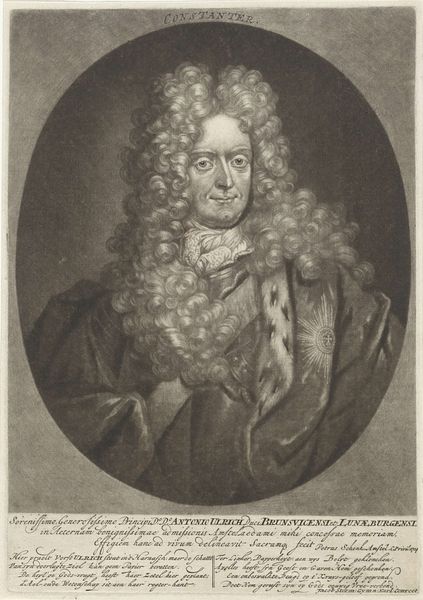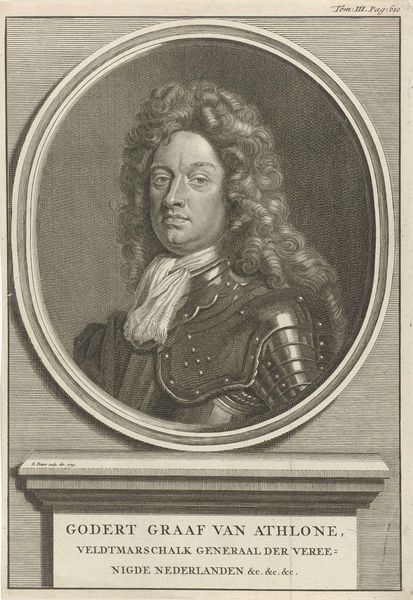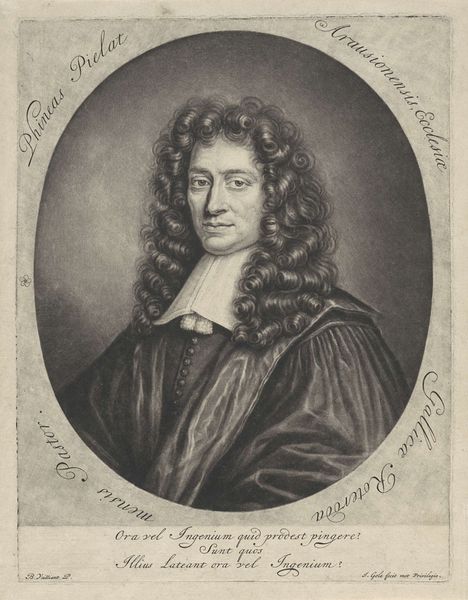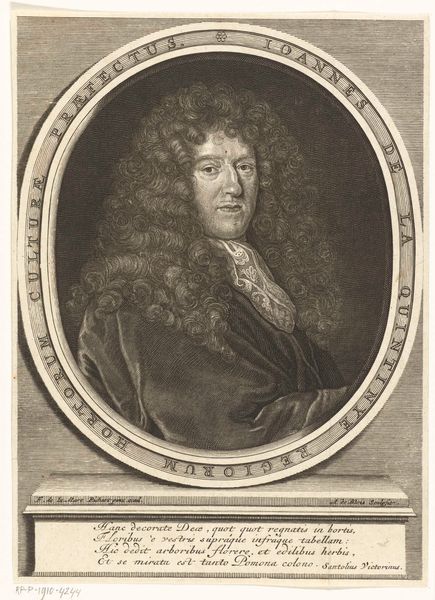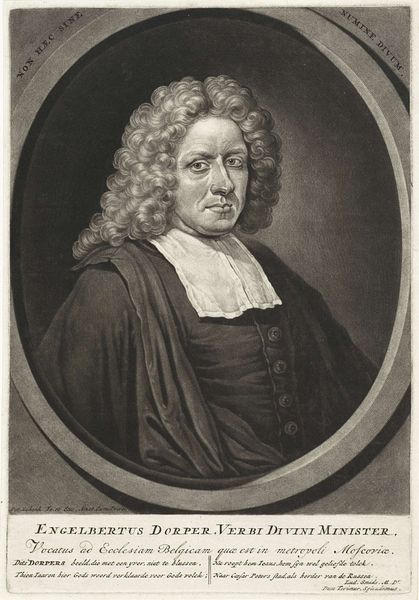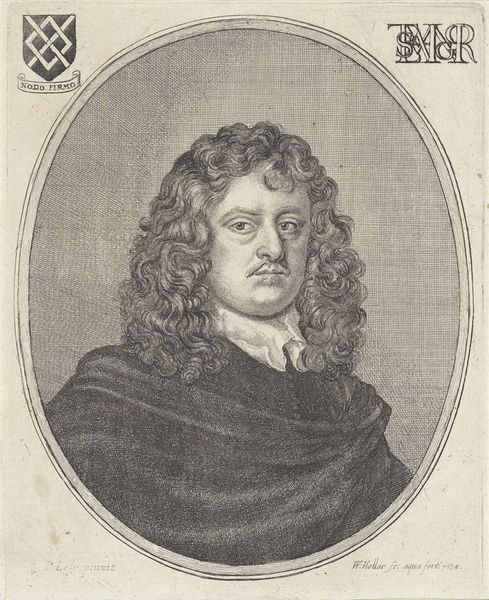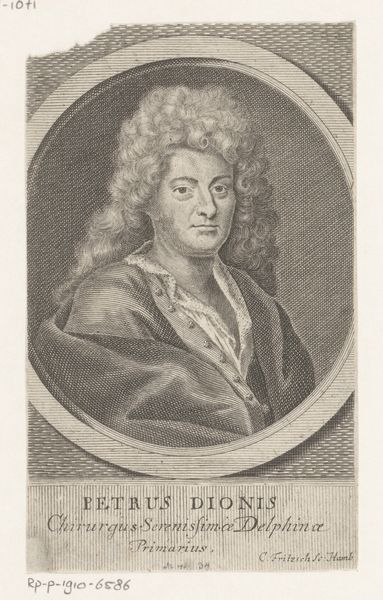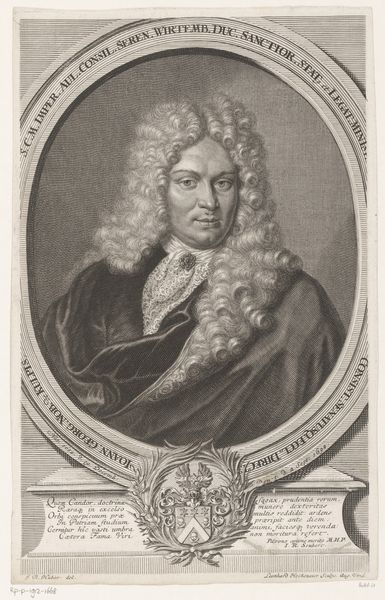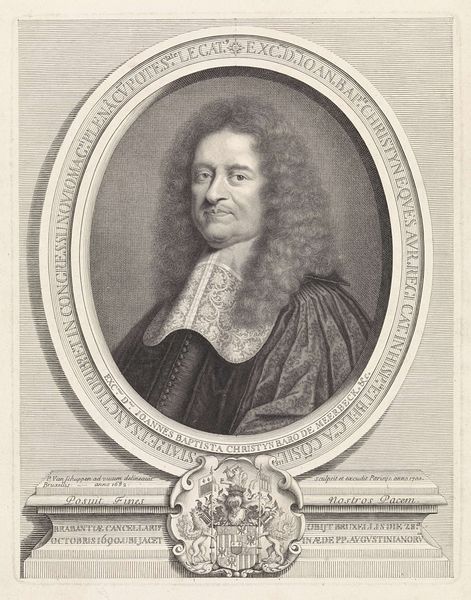
drawing, print, engraving
#
drawing
#
baroque
# print
#
old engraving style
#
historical photography
#
line
#
engraving
Dimensions: height 300 mm, width 224 mm
Copyright: Rijks Museum: Open Domain
Curator: Oh, what a face! "Portret van Georg Wolfgang Wedel" – it feels like I've just walked into a stuffy, powdered-wig-filled room in the 18th century. All those curls! Jacob Gole really captured a moment here. Editor: Indeed. What we’re seeing is an engraving of Georg Wolfgang Wedel, likely made sometime between 1670 and 1724. What strikes me immediately is the overt display of power and status signified through the subject's clothing and hairstyle. These aren’t simply aesthetic choices but calculated visual cues about Wedel's position within the societal hierarchy of the era. Curator: Hierarchy, oh yes, written all over that very self-assured… or maybe just slightly bored… expression. But the wig! I imagine Gole painstakingly rendering each coil. I can almost feel the scratch of the engraver’s tool on the plate. Did people really think this was a good look back then? Editor: "Good" is subjective. Compulsory might be a more apt description. These fashions were instrumental in codifying social ranks and served to reinforce class distinctions. They also contributed to the concept of the “male gaze,” defining acceptable or desirable traits within a highly structured environment. Curator: I suppose there is an interesting contrast there. The subject oozes wealth and high society with the magnificent hair, fancy lace, but the actual etching has a striking quality with its strong linework, almost sparse quality. So simple. That’s what I find myself returning to: technique. The way Gole managed to convey so much detail using just lines. Editor: I agree with you; the apparent simplicity belies a more significant purpose. Art during the baroque period frequently had a propagandistic bent. Visual components were utilized to construct specific images of individuals or organizations that bolstered authority. Curator: Propagandistic! A little harsh perhaps? Maybe this was just how everyone had their portraits done back then. But thinking about that... Did everyone actually have portraits of themselves? I suppose having one done, that's a political statement itself. Editor: Portraiture then, like social media profiles today, carefully curated personal brands. To have the opportunity to broadcast your image across networks was undoubtedly restricted, and by having portraits circulated to signal adherence to values and principles within closed circuits and larger communities. Curator: So many curls! Anyway, thinking about his "brand," I might need to get a portrait done of my poodle now. Editor: I, for one, intend to re-evaluate my preconceived ideas of Baroque aesthetics when it comes to images of authority in general.
Comments
No comments
Be the first to comment and join the conversation on the ultimate creative platform.
